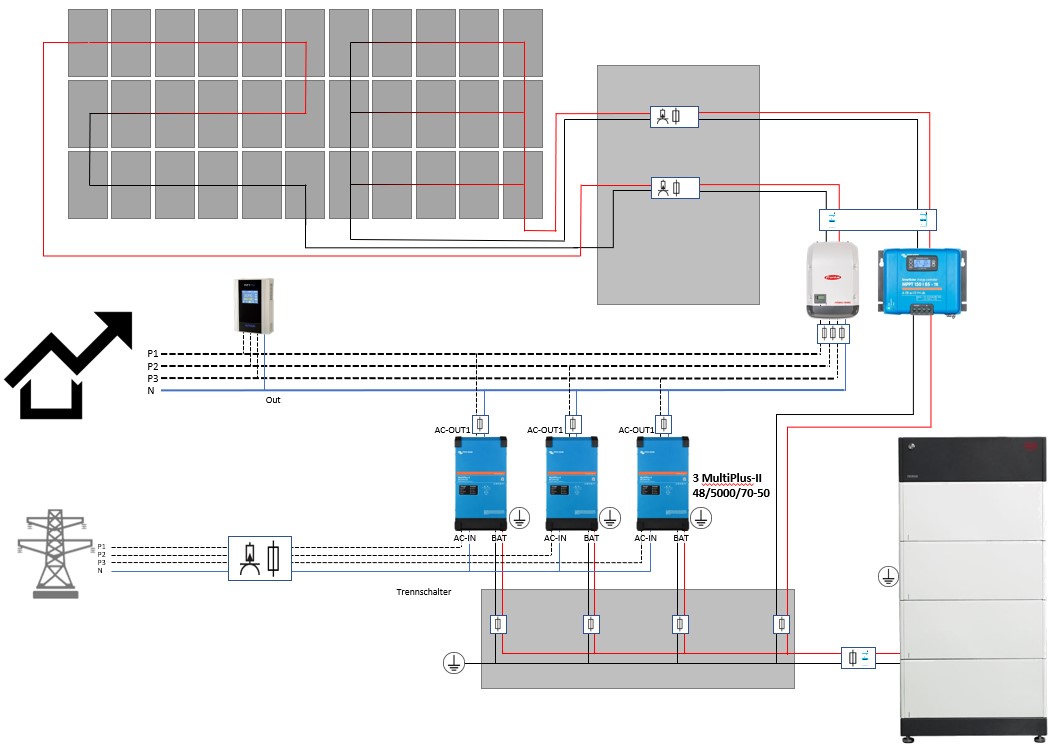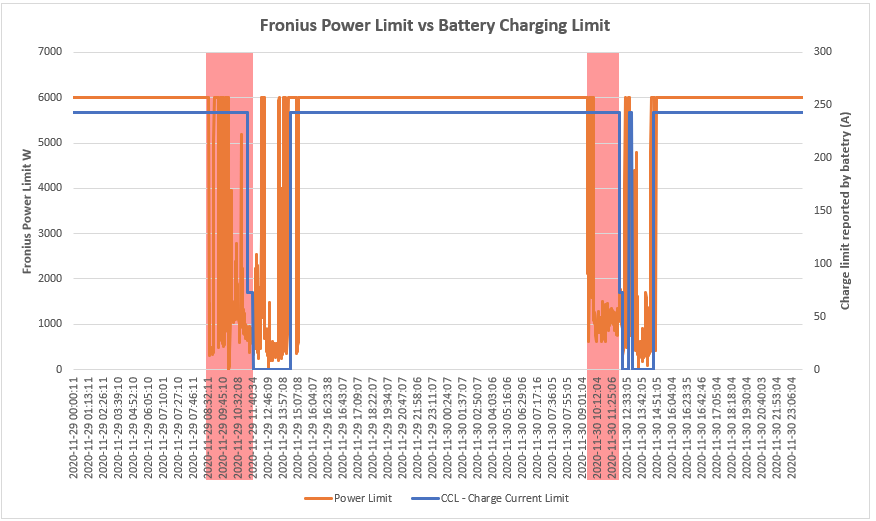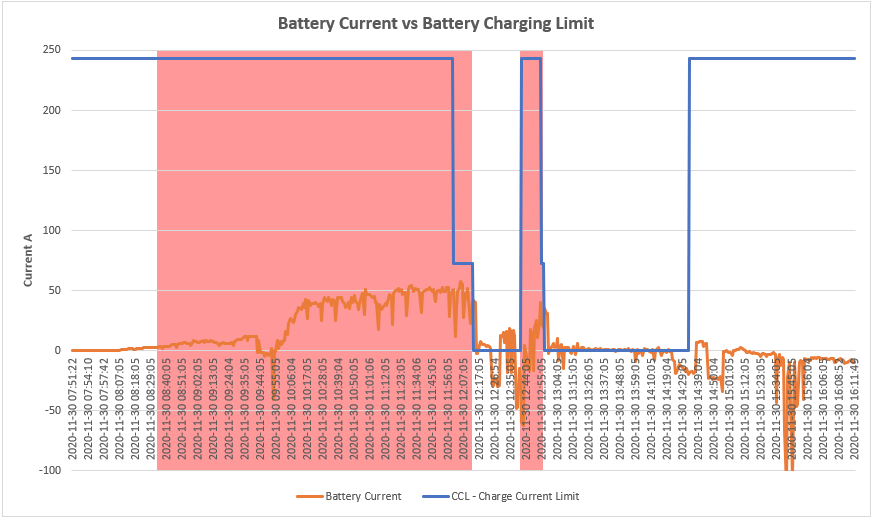Hi All,
With this documentation I like to demonstrate that Fronius Zero-feed-in algorithm ignores up to 90% of available energy in a zero-feed-configuration, although all produced energy could be fed into battery at that moment.
@Victron&Fronius-Developers: Please read this article and translate improvements into next software releases.
Generic problem description
My PV panel power balance between MPPT-fed and Fronius-fed energy ratio is about 45% vs. 55% (my complete topology is described below). This screenshot demonstrates that this ratio can be also effectively generated and loaded into AC-IN and battery as long as the grid is disconnected from MultiPlus-II.
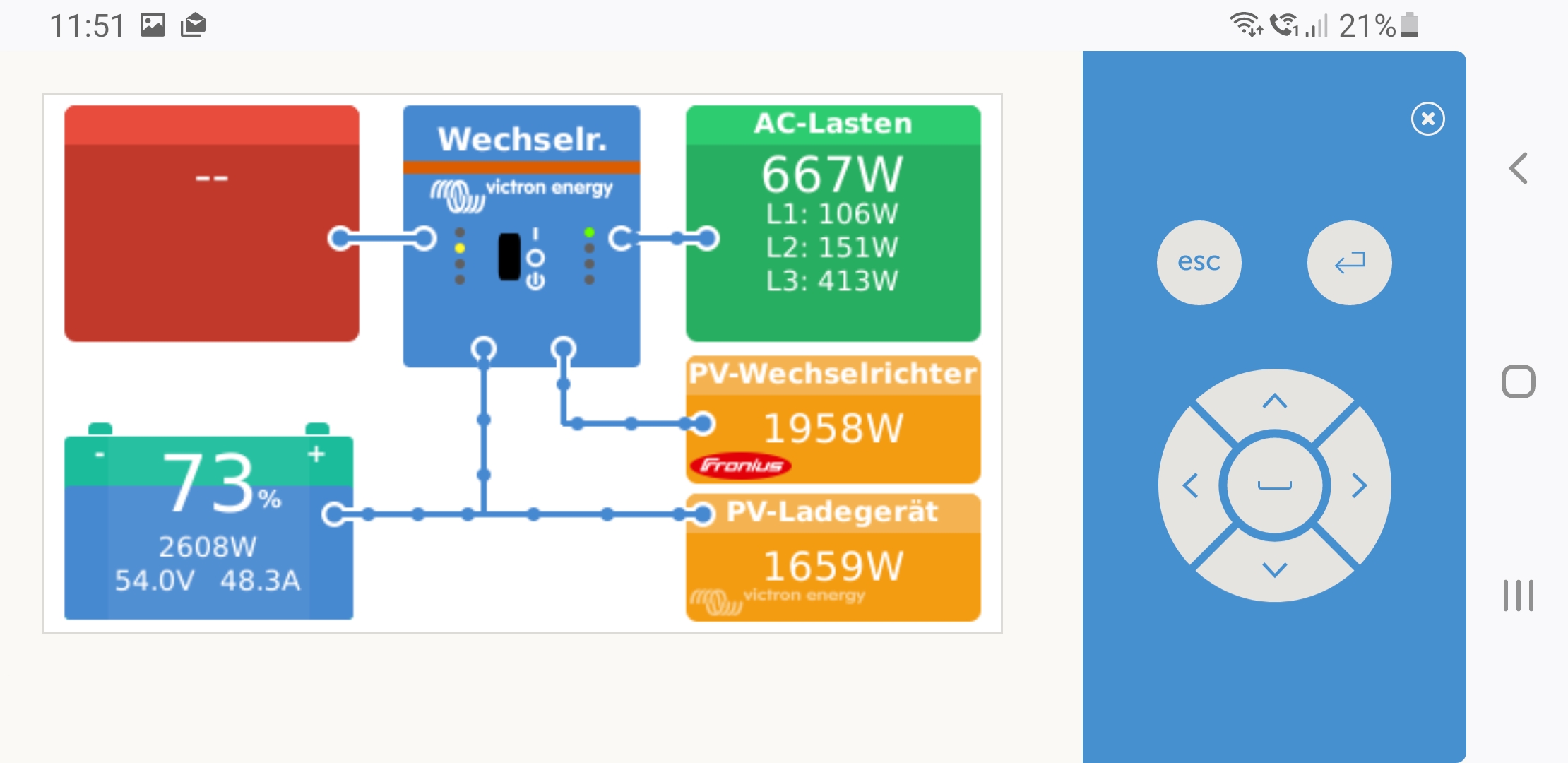
Only 30 seconds before when grid was still connected, I took that screenshot. You see that MPPT has nearly the same output, but the Fronius delivered only 28% of its actually currently possible capacity. Since the previous screenshot was taken before, it demonstrates clearly that at that moment there was no restriction of the battery taking additional energy (charging limit of 242A current allowed by BYD at that moment of time).

Frist conclusion
Fronius Zero-feed-in feature in Victron ESS wastes plenty energy (>75% in average – up to 90% in peak)
Closer analysis
Following analysis demonstrates that Fronius Zero feed-in mechanism only works as long as you have a steadily deviating power consumption. Otherwise it wastes plenty energy.
1. AC load on AC-OUT consumption is currently low at 249W and Fronius feeds in with 934W only (compared to screenshot in step 3 you see that was is only 50% of the available capacity at that moment).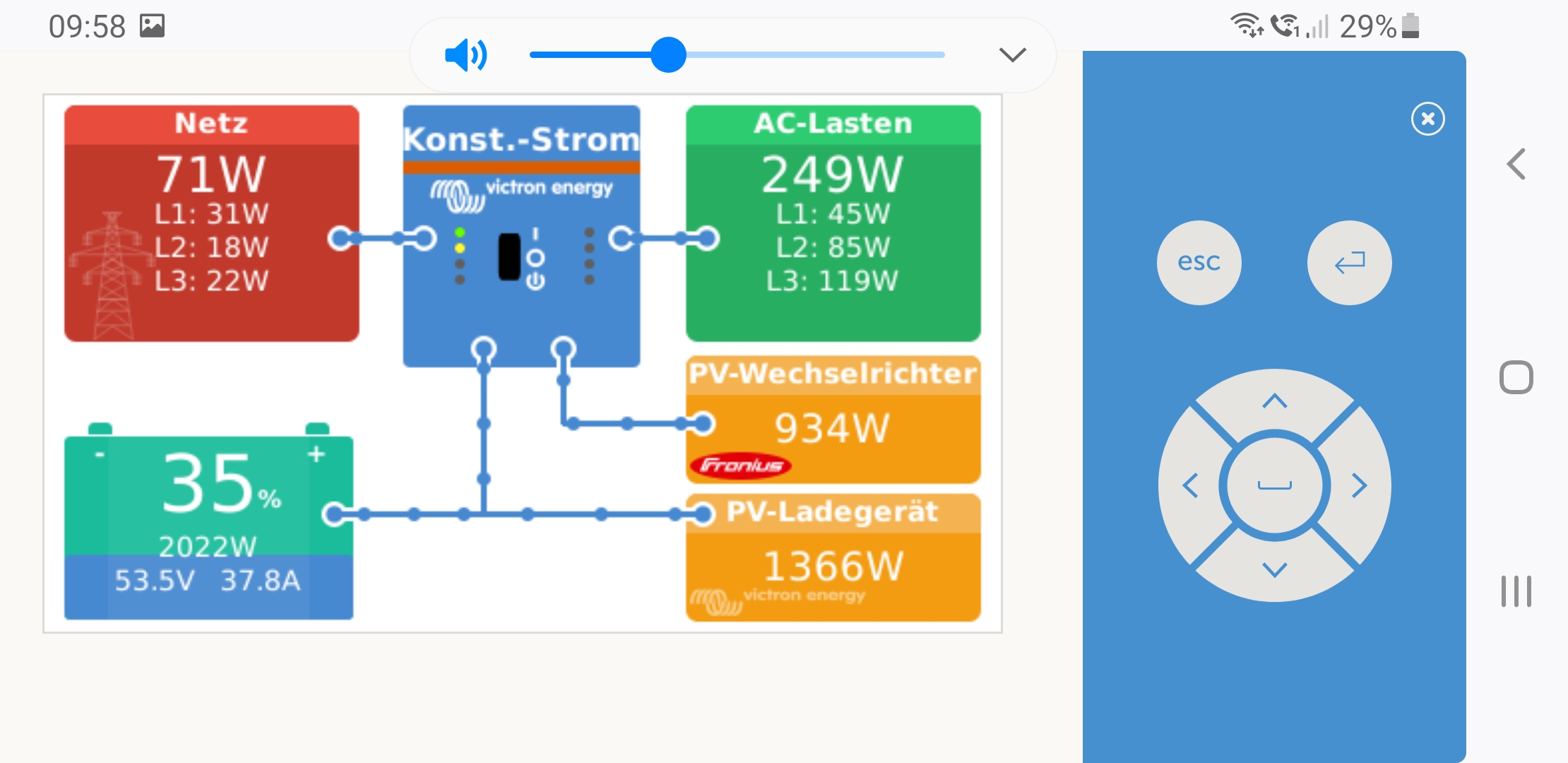
2. Switch on a mentionable load on AC-OUT1 activates the Fronius within a few seconds to leverage full available capacity.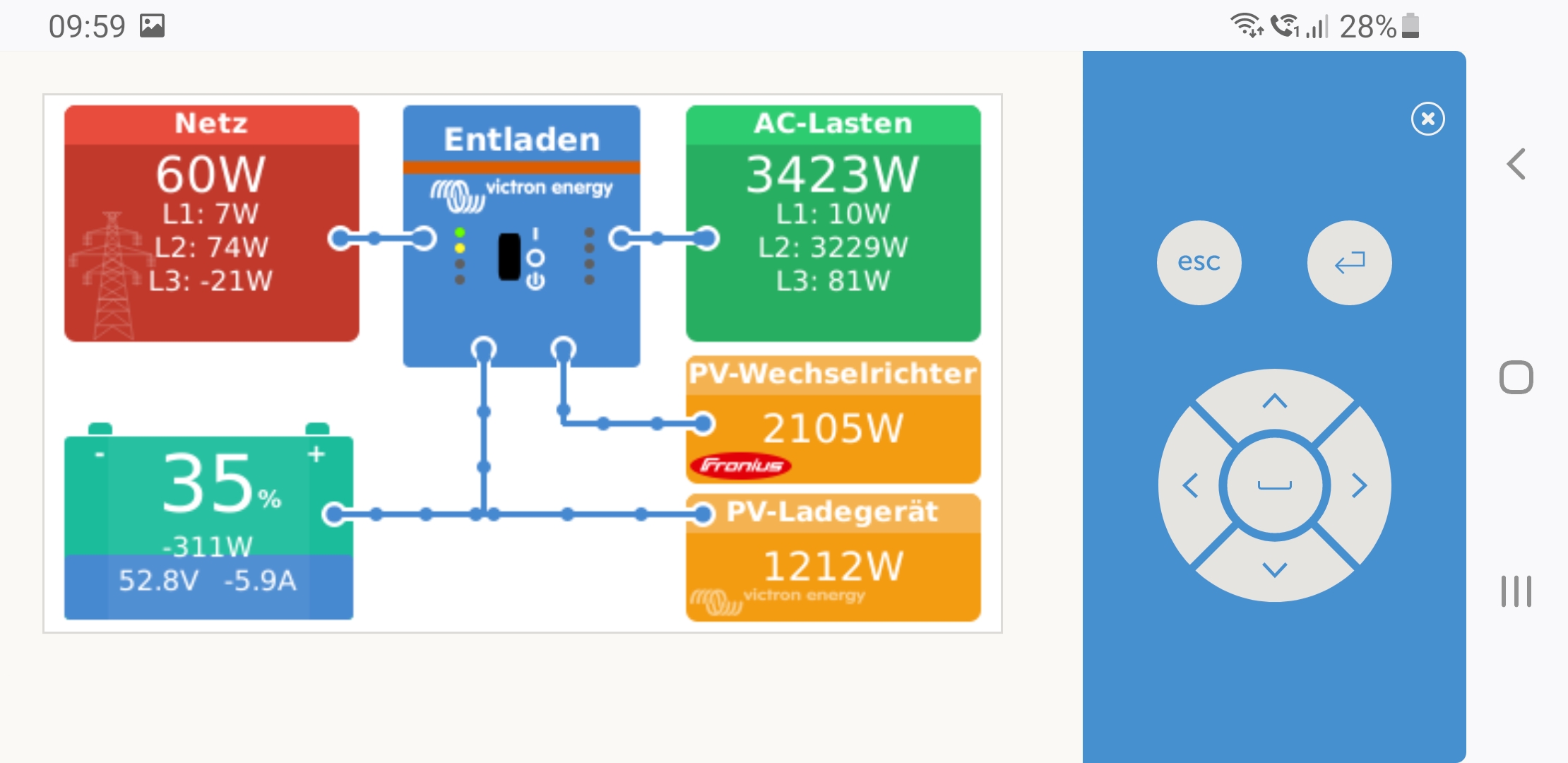
3. After having switched off the additional load, Fronius continues to produce similar but already slight lower volume. The produced capacity is fed mainly into battery.
4. As long as there is no peak any more on AC-OUT1, Fronius lowers its production steadily down. In that example its returned to 23% of currently available capacity.
Battery SOC was 52%, the currently applied current 52,9A with readiness to take 242A at that moment.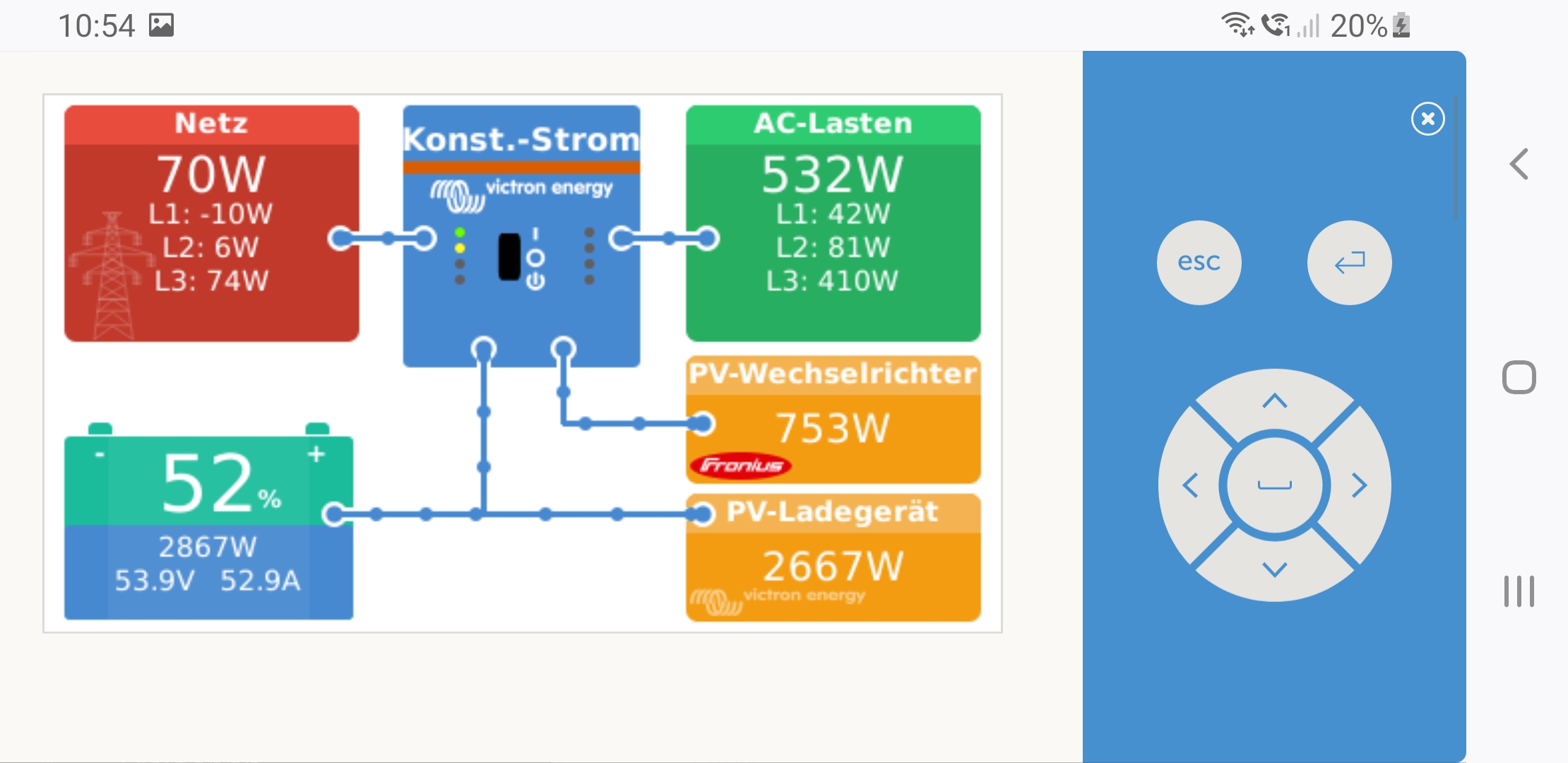
Expectation
Please improve zero-feed-in feature so that also battery will be effectively loaded with available capacity on Fronius attached PVs.
My environment
- MultiPlus-II 48/5000/70-50 in 3-phase (firmware 477) with a ESS zero feed-in configuration
- ESS zero feed-in configuration
- Multiphase regulation on single phase
- Grid setpoint defined at 80W > currently returned to 60W again
- Fronius Symo 6.0-3-M (firmware 3.16.7-1) with 6.030 kWp attached (55% of total PV) – connected to AC-OUT1 (critical loads) – no additional smart meter - sunspec activated
- Victron MPPT VE.can 250/100 rev2 (firmware 3.02) connected via VE-Bus with 5.025kWp attached (45% of total PV)
- PV modules all with absolutely identical direction and no shadowing
- BYD LV 15.4 (allowed charging and discharging current during the test procedure 243A)
BMS connected via CAN-bus (firmware 1.16) - VenusGX (firmware 2.60) > currently tested with 2.62-beta5
- Any component with latest firmware as of today
